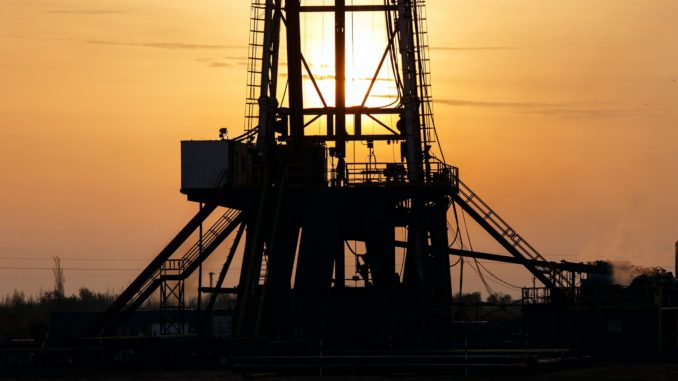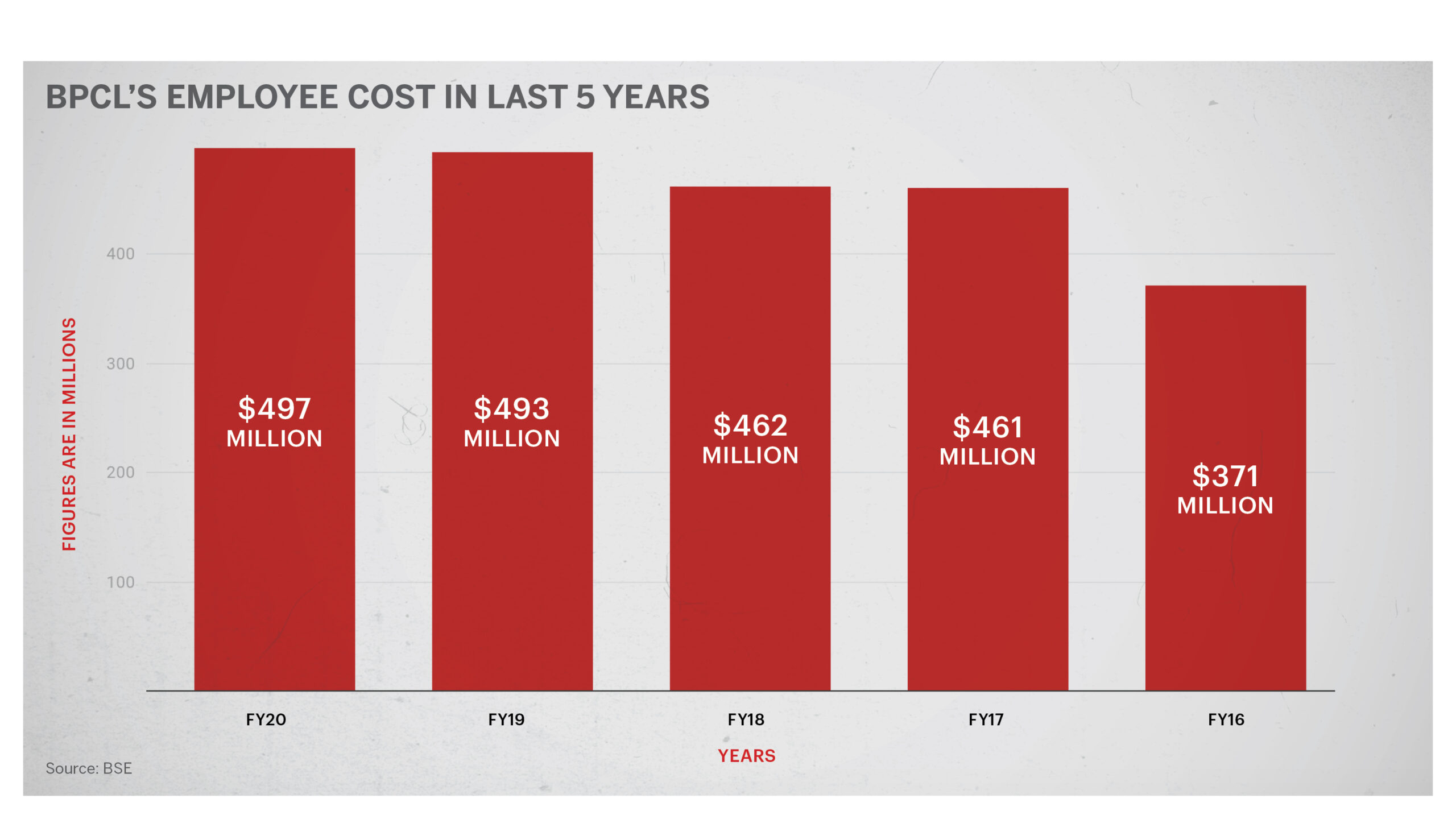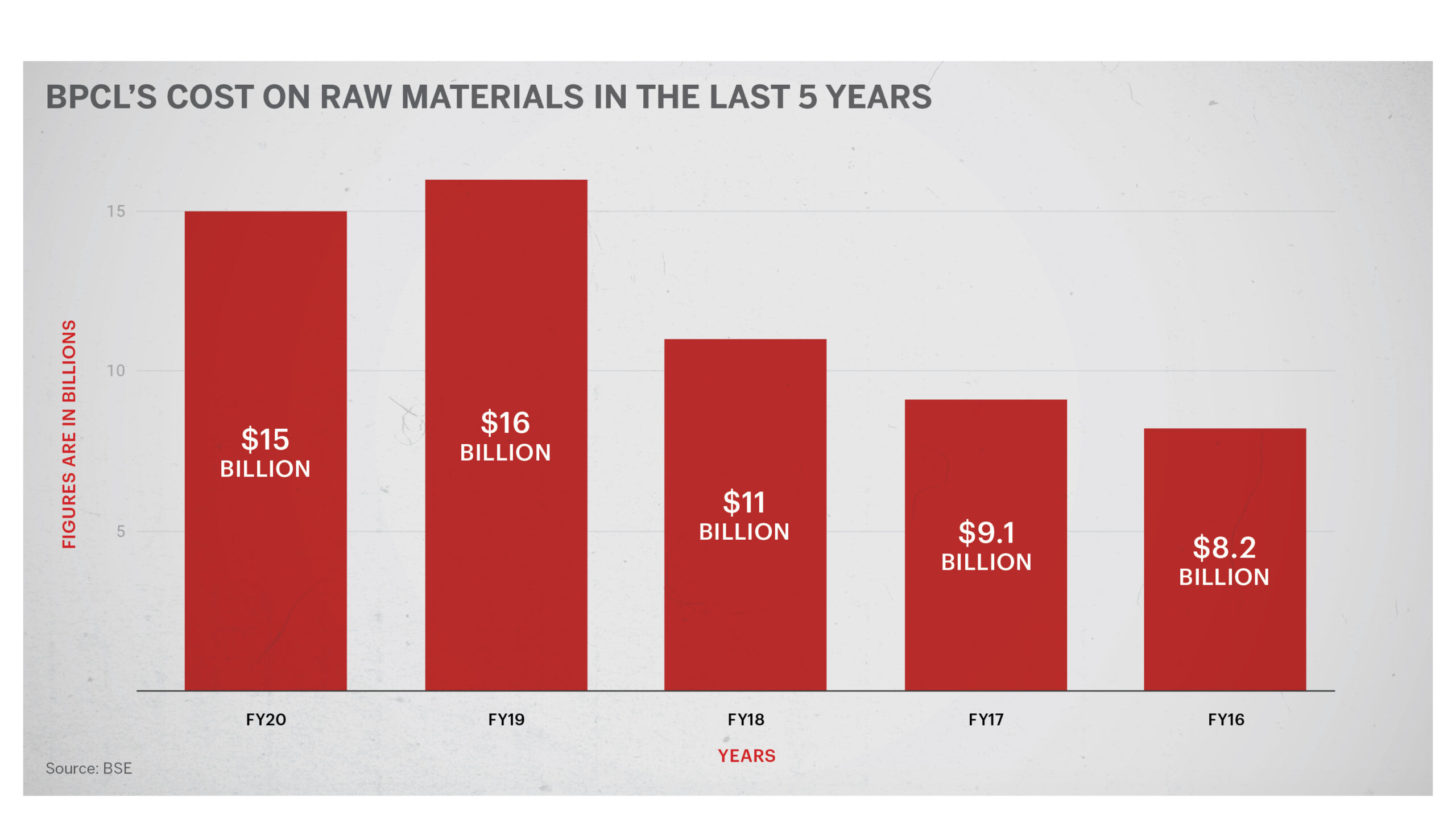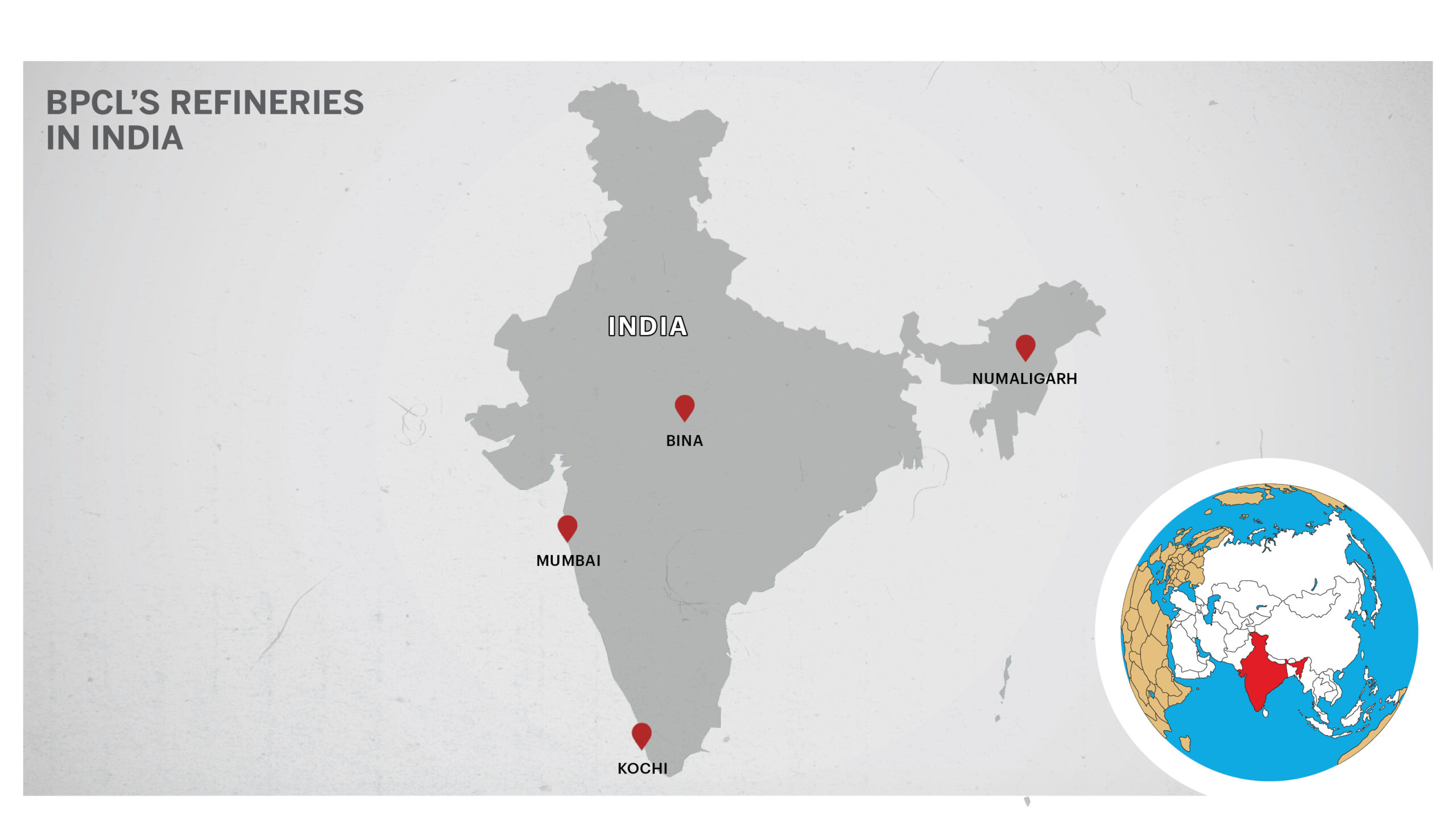
Kolkata — In a bid to raise money for development projects, India is moving to privatize its second-largest oil marketing company, Bharat Petroleum Corp. Ltd. (BPCL), by selling its 52.98 percent stake in the company.
Prime Minister Narendra Modi plans to raise INR 2.1 trillion ($28 billion) by selling the government’s stakes in public sector firms. Most of these firms were created soon after Independence in 1947, following the vision of its first prime minister, Jawaharlal Nehru, to rapidly industrialize the country. BPCL, as well as Life Insurance Corp. of India, have been chosen to meet the government’s fundraising target.
Only a few private firms have expressed an interest in BPCL. The government said in a tweet that there were “multiple expressions of interest.”
The deadline for private companies to bid for BPCL was this week, after four extensions since May due to logistical problems during the pandemic.
BPCL’s total sales fell 23 percent to about INR 49,407 crore ($6.64 billion) in the first half of this financial year (2020-21), compared with the same period last year. India follows an April-March financial year.
In the first quarter, which ended in June, the company posted a loss of INR 1,819 crore ($245 million) because of unused inventory. In the second quarter, which ended in September, BPCL posted a nearly 58 percent increase in net profit of INR 2,590 crore ($348 million) as demand improved after more than 50 days of lockdown in India.


BPCL’s throughput was around 32 million metric tons at the end of fiscal year 2020, up from 31 million metric tons in FY 2019, according to Statista.
Analysts believe that lower demand, worsened by the pandemic, could be a reason for the lack of bidder interest.
“The onset of the Covid-19 pandemic had led the demand destruction of petro-products, which may have been a reason for a lukewarm response [to the privatization bidding],” said Urvisha H. Jagasheth, analyst at CARE Advisory Research and Training in Mumbai.
“Covid-19 has prolonged the fall in demand in 2020, while increasing the glut in refining capacity and margins from 2019,” Swarnendu Bhushan, senior vice-president of research at Motilal Oswal Institutional Equities, told Zenger News.
“Despite several oil majors closing down their refineries, the dismal margins in refining persist,” he said. “Additionally, even with OPEC (Organization of the Petroleum Exporting Countries) cutting their production, oil prices are still lingering at $44 per barrel. Lower profitability and write-offs because of low oil prices have forced several global oil majors to cut their capital expenditure, including possible acquisitions, for 2020-21.”
Global oil prices have fallen in the past year from about $60 a barrel to about $44 a barrel. Oil companies are sitting on huge unsold inventory as there has been a big drop in demand due to the pandemic.
“Concerns remain on multiple fronts with respect to the privatization of BPCL,” said Bhushan. “The most important one is whether or not the government can ensure there will be no intervention in pricing of auto fuel if prices rise sharply.”
In India, petrol and diesel are not covered by the goods and services tax — an indirect tax, shared by national and state governments. Petrol and diesel are a source of major revenue for both, and they independently levy taxes on fuels, with the flexibility to raise taxes at any time.
Between FY 2016 and FY20, BPCL’s net profits fell from nearly INR 7056 crore ($950 million) to INR 2,683 crore ($361 million). At the same time, the cost of raw materials early doubled as oil global prices increased. Employee costs also increased by more than $100 million.
“Given the muted response to BPCL’s divestment, the possibility of mobilizing a large amount from this looks remote,” said Sujan Hajra, chief economist and executive director at Anand Rathi Shares and Stock Brokers. “Previously, we have seen one PSU [state-owned enterprise] buying another PSU under the divestment process. We hope this doesn’t take the same route.”
BPCL’s market cap is close to INR 83,000 crore ($11 billion)
In 2018, the government raised INR 36,915 crore ($4.9 billion) by selling its 51.11 percent stake in Hindustan Petroleum Corp. Ltd. The buyer was another government-owned company, Oil and Natural Gas Corp.
There are 23 refineries in India’s oil and gas sector, 18 of which are in the public sector.

Government subsidies are a major concern for the players in the sector. While petrol and diesel have been deregulated, liquefied petroleum gas and kerosene — both commonly used for cooking in India — are still regulated.
The government compensates its three oil major companies, BPCL, HPCL, and Indian Oil Corp., for their losses by selling LPG and kerosene at government-fixed rates. The three companies account for 90 percent of oil sales in India.
Between FY 2016-17 and FY 2018-19, the government’s oil and gas subsidies bill increased by over 65 percent, from INR 40,762 crore ($6.1 billion) to INR 67,679 crore ($10.07 billion), according to the International Institute for Sustainable Development.
“There are concerns if the government will continue with subsidies to BPCL once it’s privatized,” said Bhushan. “There is also a lack of clarity about the future BPCL’s subsidiaries.
“There are lots of subsidiaries and joint ventures. We only have clarity on NRL [Numaligarh Refinery], but not on others. Concerns would be there mainly on Bharat Petro Resources, which could see write-offs and BORL (Bharat Oman Refineries Ltd.), where the other partner may seek an exit,” said Bhushan.
The government has said that NRL will not be a part of privatization.
The privatization of oil companies is likely to bring more efficiency to oil marketing in India, say, analysts
Last year, the three government-owned oil marketing companies set up to install 78,000 new fuel pumps in the country. India currently has 64,624 fuel retail outlets, according to research from Crisil. It will be sometime in the next 12 years before 30 percent of the new outlets will be profitable.
“After privatization, the oil and gas sector could have 34 percent of its retail fuel outlets in the private sector,” said Jagasheth.
“Privatization could also result in newer, more aggressive and profitable business models in marketing and placement of products,” said Bhushan.
India was the world’s third-largest energy consumer, after China and the United States in 2018, according to the US Energy Information Administration. In September, The United States’ total petroleum inventories were 1.45 billion barrels, the highest for any month since 1956, according to the American Petroleum Institute.
(Edited by Siddharthya Roy and Judy Isacoff. Graph and map by Urvashi Makwana.)
The post India’s Bid to Privatize Major Oil Company Gets Lukewarm Response appeared first on Zenger News.
